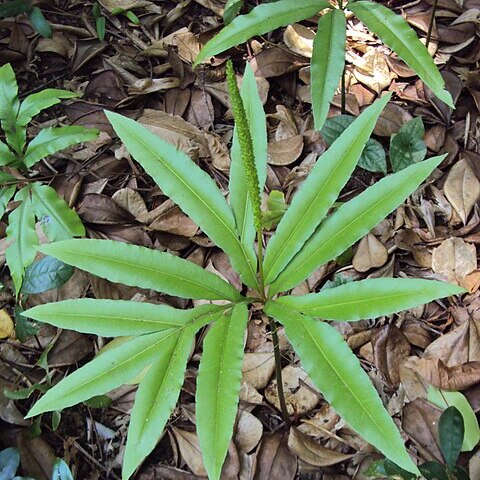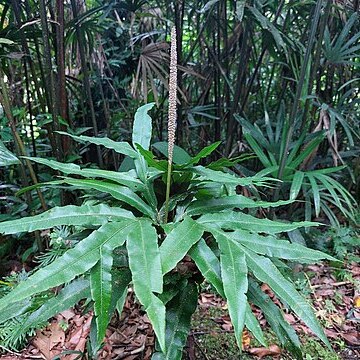Rhizome slow-creeping, unbranched, subterranean. Fronds 1 or 2 near apex of rhizome; common basal stipe erect, 15–40 cm long. Sterile lamina tripartite; parts sessile or shortly stalked, divided into 3 or 5 pinnules. Pinnae lanceolate to elliptic, acute or rarely obtuse, 5–21 cm long, 6–40 mm wide; margins entire, crenate or serrate; veins free, dichotomously branched. Sporophore cylindrical, 4–13 cm long, 5–10 mm wide, on a 4–14 cm long stipe. Lateral branches each with a group of free sessile sporangia and sterile lobes at the apex.
A fern. It is erect and grows in soil. It grows 15-90 cm tall. It has a deep creeping rhizome of underground stem. There are 1-2 leaves. The leaf stalk is thick. It is 10-60 cm long. The sterile part of the leaf is divided 3 times and these each have 2-5 segments. The segments are sword shaped and taper to the tip and have fine teeth along the edge. They are 5-25 cm long by 2-5 cm wide. The fertile spike is at the top. It is on a stalk 3-30 cm long and the spike is 5-21 cm long.


